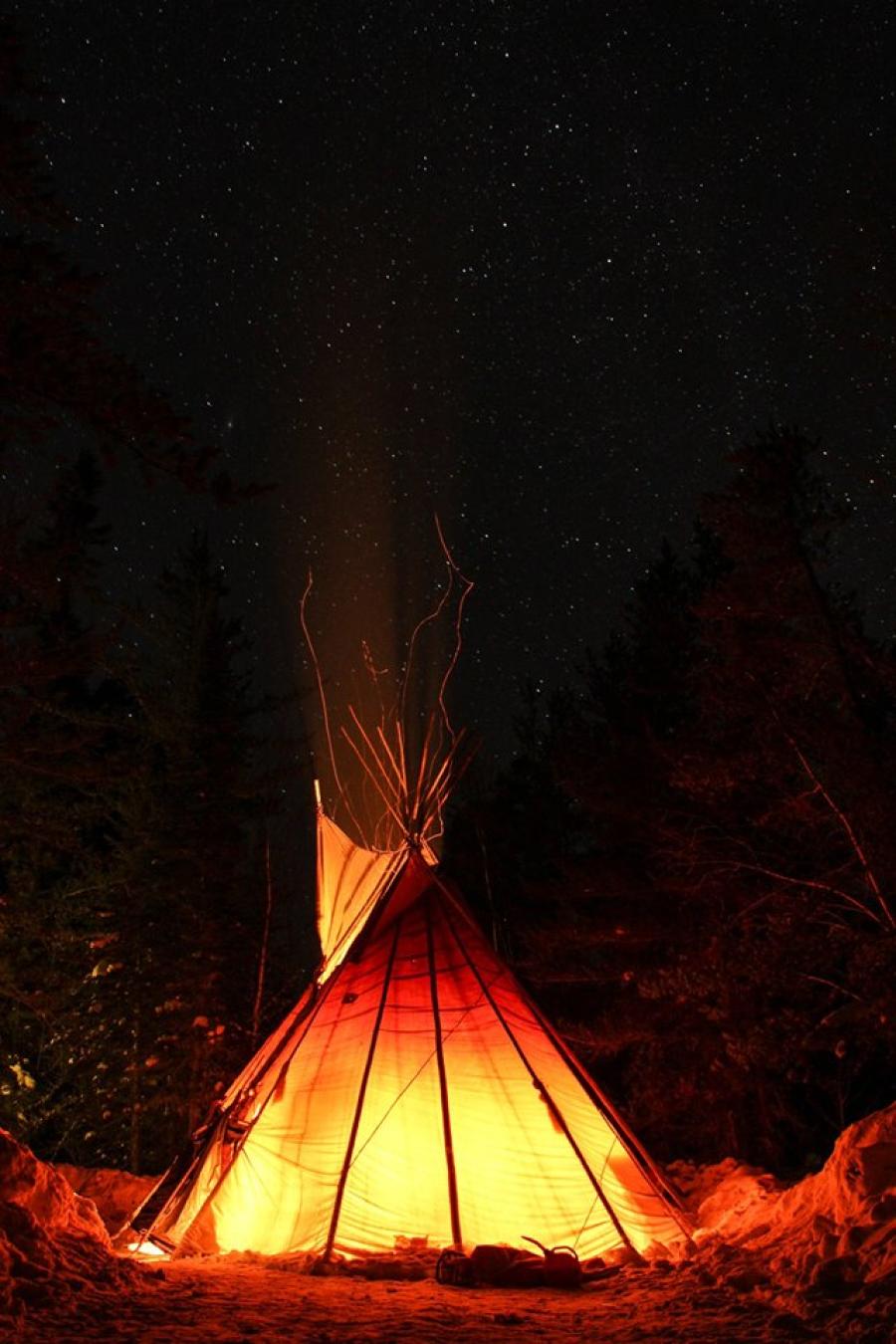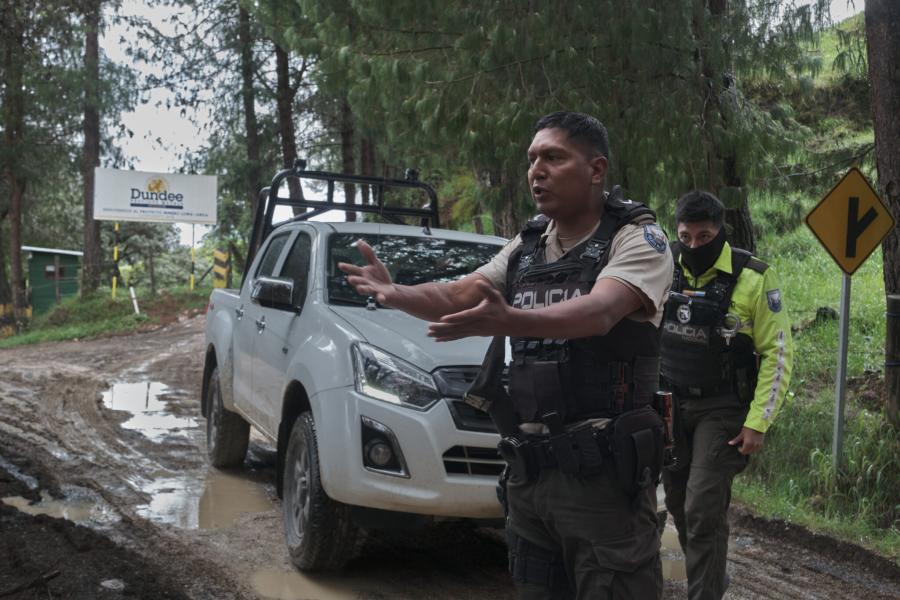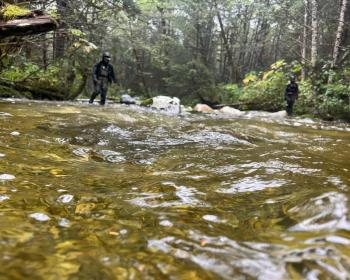Janice Forsyth, who in 2002 won a prestigious Tom Longboat Award—Canada’s top prize for Aboriginal athletes, recalls having few athletic role models when she grew up as a member of the Fisher River Cree First Nation of Manitoba. As a child, Forsyth knew Indigenous athlete Alwyn Morris had won two medals for Canada in canoeing at the 1984 Olympic Games, but she says she “knew little of his story, so it was hard to identify with him and to see him as a role model.” Now, as the newly hired director of the International Centre for Olympic Studies, she’s in a position to make sure that Indigenous children in Canada have a much more visible set of role models in sport.
Forsyth credits her parents and her grandmother for encouraging her to stay active and play sports. “When I was little,” she says, “I was enrolled in feminine-appropriate sports (like figure skating, dance, and tennis).” In high school she was limited to school-based sports for economic reasons and joined the badminton, track, and cross-country teams because they gave her a chance to travel. “I don’t think I ever really enjoyed the confines of appropriate femininity,” she says. She was happier running, so in college she gave up badminton to focus on track and cross-country because they offered more national competition opportunities.
Forsyth often was frustrated by stereotypes about Aboriginal people. (In Canada, the term “Aboriginal” is inclusive, to cover First Nations, Inuit, and Metís peoples.) In her 20s—especially in Aboriginal circles—people told her she should stop competing in sports to focus on becoming a wife and mother. “That was tough because it meant that few people celebrated my successes in sport in the same way they would celebrate male accomplishments,” she explains. She also dealt with the misconception that all Aboriginal people were naturally good athletes. “When I did well, people who believed in that racist discourse overlooked the amount of training I put into running,” she says. “The flip side is that when I had a bad race, people thought I was being lazy and said I should train more, whereas the white athletes were praised for having done well and worked hard and thus were deserving of the praise, or consoled for not performing up to their expectations.”
In 1995, when Forsyth competed at the North American Indigenous Games in Minnesota for Team Ontario, she found it liberating. She says, “It was the first time I recall being around so many different Aboriginal people who were coming together in a good way to compete in sports and celebrate our cultures. I was just another athlete and could be openly proud about being Cree.” Forsyth no longer felt that she needed to hide her heritage at athletic events and thereafter made an effort to talk about her background with people to educate them. “I still had to deal with the objectifying questions, ignorance, and racism,” she says, but knowing there were many other athletes like her trying to do the same thing made it easier.
Forsyth earned a Ph.D. in Aboriginal Sport from the International Centre for Olympic Studies at the University of Western Ontario in 2005 and taught at the University of Manitoba and the University of Alberta. Today, Forsyth’s experience as an Indigenous athlete motivates her to investigate the constraints that Aboriginal people face in sport and to work to expand opportunities for them within the Canadian sport system. She has focused particularly on the intersection of class, race, and gender in Aboriginal sport, and Aboriginal participation in the Olympic Games.
Those priorities suited her admirably for taking the helm of the International Centre for Olympic Studies, which explores socio-cultural aspects of the Olympic Games. She brings a unique perspective to the complex relationship between Canada’s Aboriginals and the Olympics. With more member nations than the United Nations, the International Olympic Committee (IOC) holds a great deal of power. Forsyth believes the IOC uses the Olympic ideals to shield itself from criticism. Citizens need “to learn more about this enterprise and what really happens (and to whom) when the Olympics, and IOC-funded projects, come to town so that individuals and groups can make more informed decisions about their position on the games,” she says.
Forsyth has been outspoken about the “illusion of Aboriginal inclusion” at the 2010 Vancouver Olympics. Past Olympic Games have used Aboriginal people and imagery “to portray their nations as multicultural and as having harmonious relations with Indigenous groups.” The Vancouver Olympics had unprecedented Aboriginal involvement, but, she holds, this participation obscured underlying tensions and perpetuated “historic inequities between Olympic organizers and Aboriginal people.” She labeled the Canadian government as “hypocritical” for portraying a harmonious relationship between it and Aboriginal cultures when Canada has not acceded to the UN Declaration on the Rights of Indigenous Peoples.
In 2004, when the leaders of the Lil'wat, Musqueam, Squamish and Tsleil-Waututh agreed to serve as hosts of the Vancouver Olympics, they became the first Indigenous Peoples recognized by the IOC as official partners at an Olympic Games. During the opening ceremonies in Vancouver, Forsyth had mixed feelings about the introduction of these Four Host First Nations. While she appreciated the global stage the Olympics provided for “letting the world know that your people, having survived colonization, are thriving in spite of efforts to assimilate them,” she was also aware of the restrictions that come into play “once you agree to be part of the Olympic machine.”
Those restrictions likely are the fallout from the 1988 Winter Olympics in Calgary, when the Lubicon First Nation of Northern Alberta tried to raise awareness of grievances over land claims ignored by the Canadian government for over 50 years. The Lubicon asked museums around the world to boycott a traveling Olympic exhibition of Aboriginal artifacts sponsored by Shell Canada, which had played a leading role in destroying the Lubicon’s land. The IOC took measures to avoid similar bad publicity in 2010 by requiring that Indigenous participants sign legal contracts agreeing not to say anything negative about the IOC or the Olympic Games. “Only officially sanctioned speech and behavior [was] allowed,” says Forsyth. Any Aboriginals using the world stage to make political statements would be labeled as protestors and kicked out of the games. Forsyth wonders what the opening ceremonies would have looked like if Aboriginal participants had been allowed to make statements about issues that concern their people, such as poverty, homelessness, addiction, the abuse of women, poor roads, and a shortage of schools.
At the games’ Aboriginal Pavilion, an average of 14,000 people a day watched singing, dancing, drumming, and other performances and bought Aboriginal-themed merchandise. A third of the proceeds went to the Aboriginal Youth Sport Legacy Fund that supports sport and recreation programs for Aboriginal youth in Canada and helped to create a First Nations snowboard team that now has over 200 members. The hope is that Aboriginal children can train at the Olympic facilities (built in part by members of the Four Host First Nations) and that some of them will go on to compete in the Olympics. Canadian Aboriginal participation in the games so far has been shockingly low: Only one self-identified, Canadian Aboriginal athlete (snowboarder Caroline Calve) competed in the 2010 Vancouver Games for Team Canada, and a single Indigenous athlete (pentathlete Monica Pinette) represented the country in Beijing and Athens.
Forsyth says it remains to be seen whether having the Four Host First Nations serve as official hosts of the Olympic Games will benefit Aboriginal Canadians in the long run. Providing more athletic opportunities for Aboriginal Peoples creates a number of challenges, such as sharing resources more equitably. The Aboriginal population is largely poor, and transporting children in rural areas to the nearest sports facility is costly. Evidence shows, however, that increased access to athletic opportunities has a huge impact. Drug and alcohol use and criminal activity drop when kids have access to sports, notes Forsyth. When Aboriginal athletes like pentathlete Monica Pinette and paralympian Richard Peters compete on an international stage, they bring a sense of pride and hope to their First Nation communities. As director of the International Centre for Olympic Studies, Forsyth is in a prime position to help more Indigenous athletes participate in future Olympic Games, making Aboriginal inclusion more than just an illusion.
Miranda Vitello was an intern at Cultural Survival in the spring of 2010.



